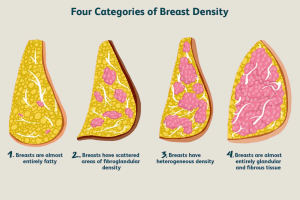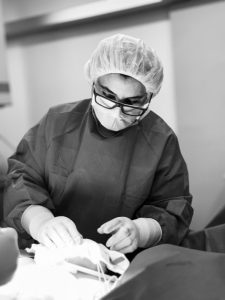Discuss your specific concerns and desires during consultation, to ensure that your expectations align with what is surgically achievable, surgical options, potential risks, and to gain realistic expectations
Large size breast called macromastia which is a Latin word but, some ladies may suffer from exceptionally large size breasts called Gigantic breasts which is a real medical issue that can even affect girls in their early teenage. Macromastia, can occur as a result of various factors, including hormonal imbalances, genetics, or certain medications. Physical symptoms that can be related to macromastia including back, neck, plus shoulder pain and grooving, poor posture, and skin irritation or skin rashes under the breasts. Aside from the physical discomfort, individuals with macromastia may encounter difficulties in finding well-fitting clothing. Moreover, the condition can have psychological effects, impacting self-esteem, body image, and overall quality of life.
Almost all the women dealing with gigantic breasts may feel self-conscious or ashamed of their appearance, leading to emotional distress and social withdrawal.
Reduction Mammaplasty:
A breast reduction, also known as a reduction mammoplasty, is a surgical procedure performed to remove excess skin, fat and excess breast tissue from the breasts, followed by reshaping and elevating to create a smaller, more proportionate bust size. So, one of the primary desires of women seeking breast reduction surgery is to achieve a more proportional and balanced breast appearance that better aligns with their overall body proportions.
In addition to seeking a more proportional appearance, women often desire breasts that are firmer and perkier that giving them a more youthful and aesthetically pleasing appearance.
Motivations for breast reduction surgery can extend beyond addressing issues of physical appearance and discomfort.
Many women also seek surgery as a means of improving their quality of life. Overly large breasts can restrict physical activities, making it challenging to engage in sports or exercise properly. By reducing the size of their breasts, women hope to regain their mobility and participate more comfortably in various physical activities.
Aim of Breast Reduction Surgery
- Reducing neck, back, and shoulder pain caused by the weight of heavy breasts.
- Improving self-confidence about breast size.
- Decreasing breast size to be in proportion with the body frame.
- Redirecting nipples that hang down.
- Relieving chafing and skin irritation caused by sagging breast skin.
- Balancing the size of asymmetrical breasts.
Types of Breast Reduction Surgeries
- Scarless Breast Reduction (Liposuction) LBR
- Vertical (Lollipop) Breast Reduction
- Iinverted T (Anchor) Breast Reduction
- Combined LBR with Mastopexy
Making decision about the best approach for your breast reduction will depend on your plastic surgeon expertise and you breast tissue density.. Discuss all details thoroughly during the consultation time .
Also, t is important to know that pregnancy, breastfeeding and weight fluctuations may affect the long-term appearance of the breasts.
Important Note:
Making decision about the best approach for your breast reduction will depend on your plastic surgeon expertise and your breast tissue density.. Discuss all details thoroughly during the consultation time
Which Breast Reduction Method Is Best?
There is no one best method of breast reduction. Each patient will require a different method depending on her individual needs and goals. The best technique for each patient depends on their initial breast tissue constituent, the amount of tissue that needs to be removed, and their desired end result in terms of aesthetic appearance.
- Age of the patient.
- Current breast anatomy? (size, shape, type of tissue)
- Tissue of breast Fatty /glandular ratio (dominant one)
- How much of a reduction in size patient looking for
- Areola size, symmetry and shape.
- Any significant asymmetry between the breasts.
- Patient seeking cosmetic reshaping and lifting of the breast
- Patient primary concern (aesthetically or physically)

Breast tissue is composed of milk glands, milk ducts and supportive tissue (dense breast tissue) and fatty tissue (nondense breast tissue)
Scarless Breast Reduction- LBR
Liposuction breast reduction, is a minimally invasive procedure, it is a quick, safe and effective alternative to traditional breast reduction. The fat tissue in the breast suctioned out, resulting in smaller breast with minimal scarring.
Who is a good candidate for LBR:
1.Women seeking minimal to moderate changes in breast size
2.Women their breast tissue is mostly fatty tissue
3.Women who have a good skin elasticity.
4.Elderly individuals suffering and experiencing shoulder and neck pain from their macromastia, and they are not a candidate for conventional breast reduction surgery, as they have coexisting medical conditions that could hinder the procedure.
While breast size is reduced with liposuction, the overall shape and contour of the breast, including the position of the areola and nipple, will remain the same.
If a woman is seeking a lift, modification to breast shape or symmetry, this procedure is not suitable approach for her.
Vertical (Lollipop) Breast Reduction
Who is a good candidate for vertical breast reduction:
1.Women who need a mild to moderate reduction in breast size
- Those with noticeable sagging who would like more significant reshaping and lifting of the breast tissue.
This method allows for the removal of not only fat tissue, but glandular tissue as well. The breast is made narrower, lifted and restructured so that the areola and nipple are moved to a natural looking.

Inverted T (Anchor) Breast Reduction
An anchor, or inverted T breast reduction allows for greater tissue removal and more extensive reshaping. This method is thus ideal for those with significant glandular tissue comparing with fatty tissue. sagging or in need of a considerable reduction in breast size.
During the procedure, the areola size is reduced, excess breast tissue is removed, and the nipple is raised to a more desirable position.

Combined LBR with Mastopexy
Dr. Kazzaz’s preferred approach for dominant fatty tissue breasts
Introducing Dr. Kazzaz’s Personal Approach, designed for postmenopausal women or any woman with predominantly fatty breast tissue who may be experiencing physical problems due to their large breast size. This approach utilizes Liposuction Breast Reduction (LBR) to reduce breast size, with some patients with mega breasts, having up to 2 L of fatty tissue removed from each breast by liposuction.
Excess skin is managed through an inverted T-shaped breast reduction procedure. Glandular tissue is repositioned and fixed into a more natural & aesthetically pleasing position. This approach can also be used for younger individuals with fatty breasts. It offers
a more stable outcome and longer-lasting results as body weight changing. Additionally, there is a higher chance of preserving nipple sensitivity and lactation ability due to minimal glandular tissue removal.
Important to Remember
- pregnancy, breastfeeding and weight fluctuations may affect the long-term appearance of the breasts.
- Discuss your specific concerns and desires during consultation, to ensure that your expectations align with what is surgically achievable, surgical options, potential risks, and to gain realistic expectations
